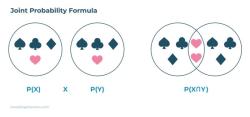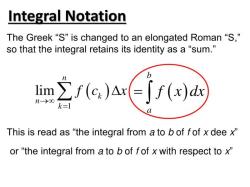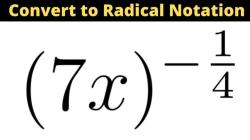How can I find the median of this frequency distribution?
To find the median of a frequency distribution, you can follow these steps:
Organize the Data:
- Start with your frequency distribution table, which should have two columns: one for the data values (class or category) and another for their corresponding frequencies (how many times each value occurs).
Calculate the Cumulative Frequencies:
- Add up the frequencies as you go down the list. Create a third column for cumulative frequencies. This column helps you determine where the median falls.
Identify the Median Class:
- Determine the class interval that contains the median. The median class is typically the one where the cumulative frequency just exceeds half of the total frequency (n/2, where n is the total number of data points).
Use the Median Formula:
- The median (Md) can be calculated using the following formula:Md = L + [(n/2 - F) / f] * w
- Md: Median
- L: Lower boundary of the median class
- n: Total number of data points
- F: Cumulative frequency of the class before the median class
- f: Frequency of the median class
- w: Width of the median class interval
- The median (Md) can be calculated using the following formula:Md = L + [(n/2 - F) / f] * w
Calculate the Median:
- Plug the values from step 4 into the formula to calculate the median.
Here's a step-by-step example:
Suppose you have the following frequency distribution for test scores:
| Score Range | Frequency |
|---|---|
| 60-69 | 5 |
| 70-79 | 12 |
| 80-89 | 20 |
| 90-99 | 8 |
| 100-109 | 5 |
Organize the data.
Calculate the cumulative frequencies:
- Cumulative Frequency for 60-69: 5
- Cumulative Frequency for 70-79: 5 + 12 = 17
- Cumulative Frequency for 80-89: 17 + 20 = 37
- Cumulative Frequency for 90-99: 37 + 8 = 45
- Cumulative Frequency for 100-109: 45 + 5 = 50
Identify the median class: The median class is the one where the cumulative frequency just exceeds half of the total frequency. In this case, that's the class with a cumulative frequency of 17, which corresponds to the score range 70-79.
Use the median formula:
- L (Lower boundary of the median class) = 70
- n (Total number of data points) = 50
- F (Cumulative frequency of the class before the median class) = 5
- f (Frequency of the median class) = 12
- w (Width of the median class interval) = 10 (80 - 70)
Calculate the median:
- Md = 70 + [(50/2 - 5) / 12] * 10
- Md = 70 + [(25 - 5) / 12] * 10
- Md = 70 + (20 / 12) * 10
- Md = 70 + (5/3) * 10
- Md = 70 + 50/3
- Md ≈ 85.67
So, the median test score is approximately 85.67. Since test scores are typically whole numbers, you might round this to the nearest whole number, which would be 86 in this case.
Finding the Median of a Frequency Distribution: Step-by-Step
To find the median of a frequency distribution, follow these steps:
- Arrange the data in ascending or descending order.
- Find the cumulative frequency. This is done by adding the frequencies of all values up to and including the current value.
- Find the median. The median is the middle value of the cumulative frequency distribution. If the cumulative frequency is even, the median is the average of the two middle values.
Here is an example:
Data: 2, 4, 4, 5, 6, 7, 8, 9, 10
Frequency: 2, 1, 2, 1, 1, 1, 1, 1, 1
Cumulative frequency: 2, 3, 5, 6, 7, 8, 9, 10, 11
The median is the 6th value of the cumulative frequency distribution. Therefore, the median is 6.
If the cumulative frequency is odd, the median is the middle value.
Here is an example:
Data: 2, 4, 4, 5, 6, 7, 8, 9
Frequency: 1, 1, 2, 1, 1, 1, 1, 1
Cumulative frequency: 1, 2, 4, 5, 6, 7, 8, 9
The median is the 5th value of the cumulative frequency distribution. Therefore, the median is 5.
Calculating the Median for Grouped Data Sets
For grouped data sets, the median can be calculated using the following formula:
Median = L + (f/2 + fc - cf)/f * i
where:
- L is the lower limit of the median class
- f is the frequency of the median class
- fc is the cumulative frequency of the class below the median class
- cf is the cumulative frequency of the median class
- i is the class interval
Here is an example:
Data: 0-10 (2), 11-20 (3), 21-30 (4), 31-40 (5), 41-50 (6)
Frequency: 2, 3, 4, 5, 6
Cumulative frequency: 2, 5, 9, 14, 20
The median class is the 31-40 class, since its cumulative frequency (14) is closest to the total frequency (20)/2 = 10.
Using the formula above, the median can be calculated as follows:
Median = 31 + (5/2 + 9 - 14)/5 * 10
Median = 31 + 1/5 * 10
Median = 31 + 2
Median = 33
Therefore, the median of the grouped data set is 33.
Determining the Central Value in a Frequency Table
The median is a useful measure of central tendency for frequency distributions. It is less affected by outliers than the mean and is easier to calculate. The median can be used to identify the central value of a data set and to make comparisons between different data sets.
For example, if we have two data sets of student test scores, we can compare the medians of the two data sets to see which group of students performed better overall.
The median is a valuable tool for understanding and analyzing frequency distributions.











